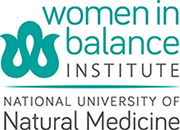Recent controversies regarding mammogram guidelines leave many women confused.
By Jamie Fields ND Candidate 2013
Screening mammograms provide an x-ray image of the breast tissue. They are used to detect suspicious tissue in otherwise healthy women without signs of symptoms of breast cancer. Signs or symptoms of breast cancer may include a lump, breast pain, thickening or dimpling of the skin on the breast, nipple discharge, or a change in breast size or shape.
The goal of screening mammography is to find any tumors that are too small to be felt during a breast exam. By finding a breast tumor early, treatment can be initiated earlier. Often times, early detection leads to a reduced risk of metastasis (spreading to other areas) or death from breast cancer.
In 2009, the guidelines for mammograms and self breast exams were changed by the United States Preventive Services Task Force (USPSTF), a group of health experts who review scientific data and literature and make recommendations on screening tests. They suggest that mammograms be completed biannually by woman ages 50-74 only, rather than the previous recommendation of annually after the age of 40. They also recommend against the self-breast exam, which had previously been recommended monthly.
Mammography
After reviewing recent data, the USPSTF concluded that the risk of performing mammograms before age 50 and after age 74 does not outweigh the benefit of enduring the exam. The primary potential risk cited is having a false positive test result.
On the other hand, a 2010 study looking at the 40-49 age group found that annual mammography decreased risk of breast cancer mortality by 29%, leading many organizations to remain with the previous recommendations. For example, the American Cancer Society, the Susan G. Komen Foundation, and the American Congress of Obstetrics and Gynecology all suggest screening mammography yearly beginning at age 40.
Self Breast Exam
The USPSTF found that there isn’t enough evidence that performing this exam at home reduces the death rate from breast cancer. However, routine breast exams do encourage familiarity with the breast tissue, and according to the Johns Hopkins Medical Center “Forty percent of diagnosed breast cancers are detected by women who feel a lump, so establishing a regular breast self-exam is very important”. Most organizations and doctors are recommending breast self exam as per the patients comfort.
Although the USPSTF changed their recommended guidelines for breast cancer screening, it seems that the verdict is out for most health care organizations. A common approach would be the following:
- Regular self breast exam
- Yearly screening mammography starting at age 40
- Yearly clinical breast exam performed by a health care professional
Ultimately, it is you and your doctor’s decision to interpret the guidelines and recommendations in a manner that supports your health. The goal is to ensure the health and safety of your breasts. Please schedule an appointment with your health care provider to discuss any questions or concerns regarding your breast health and to determine a screening schedule most appropriate for you.

